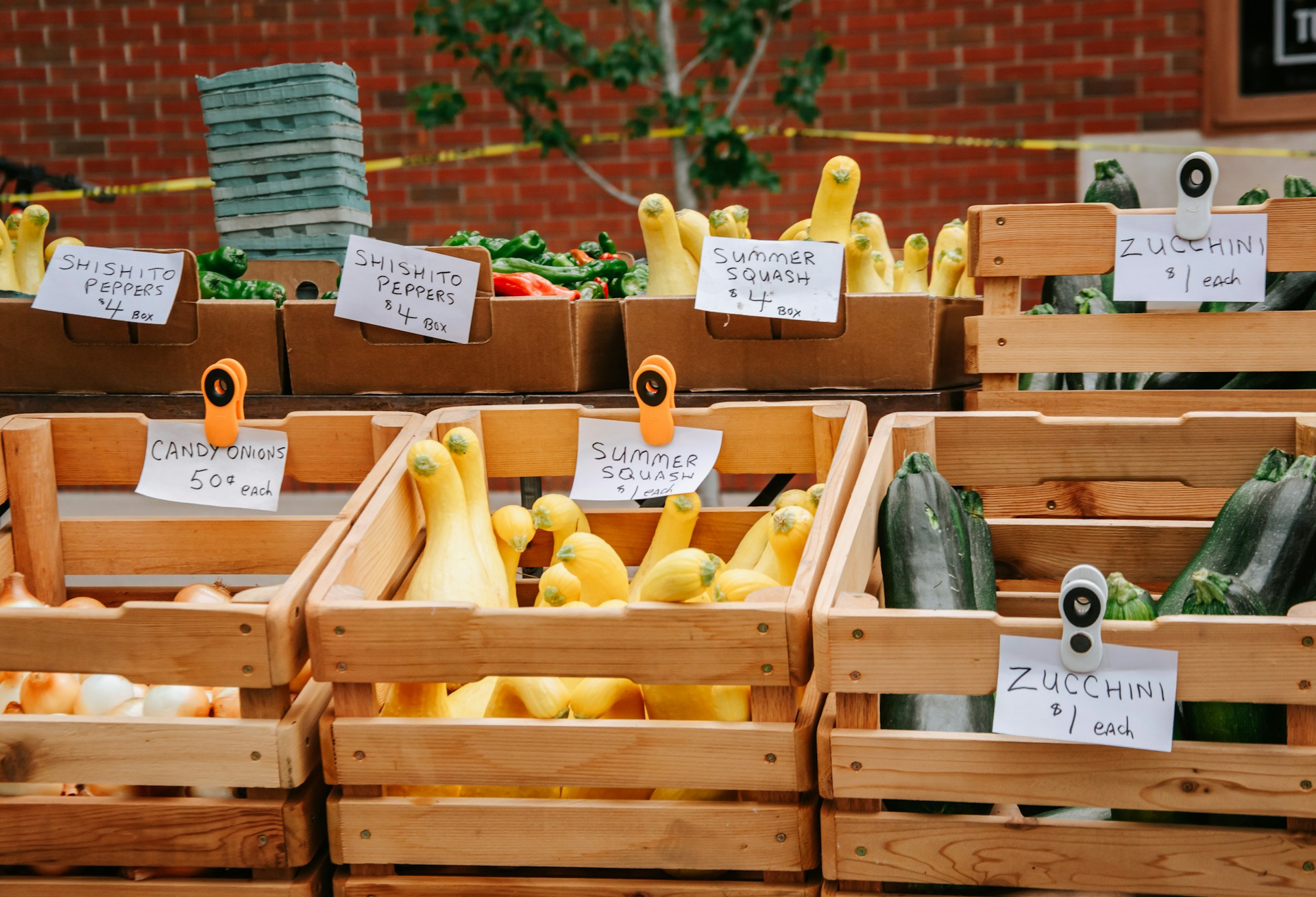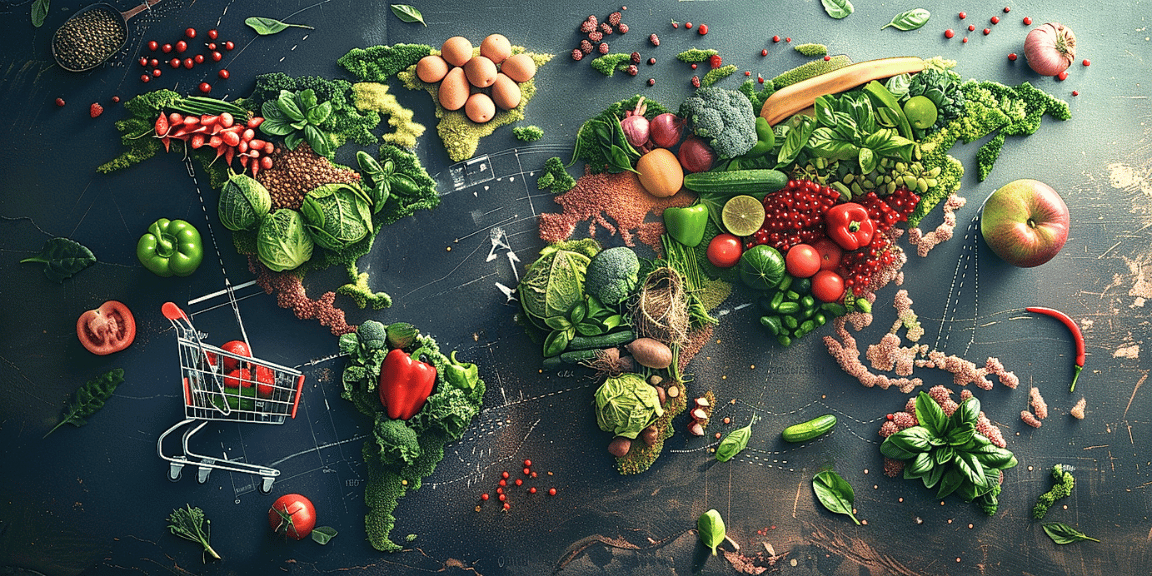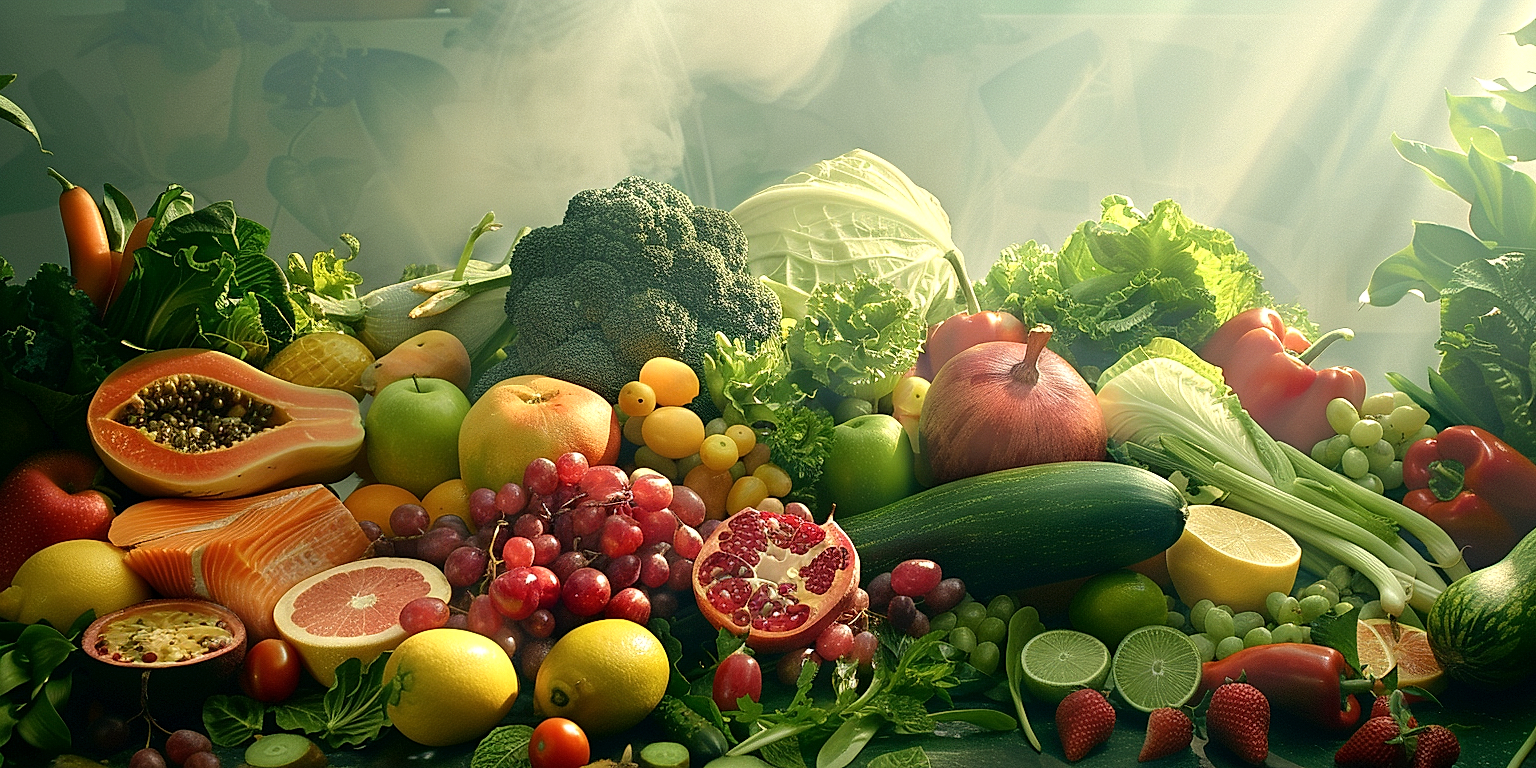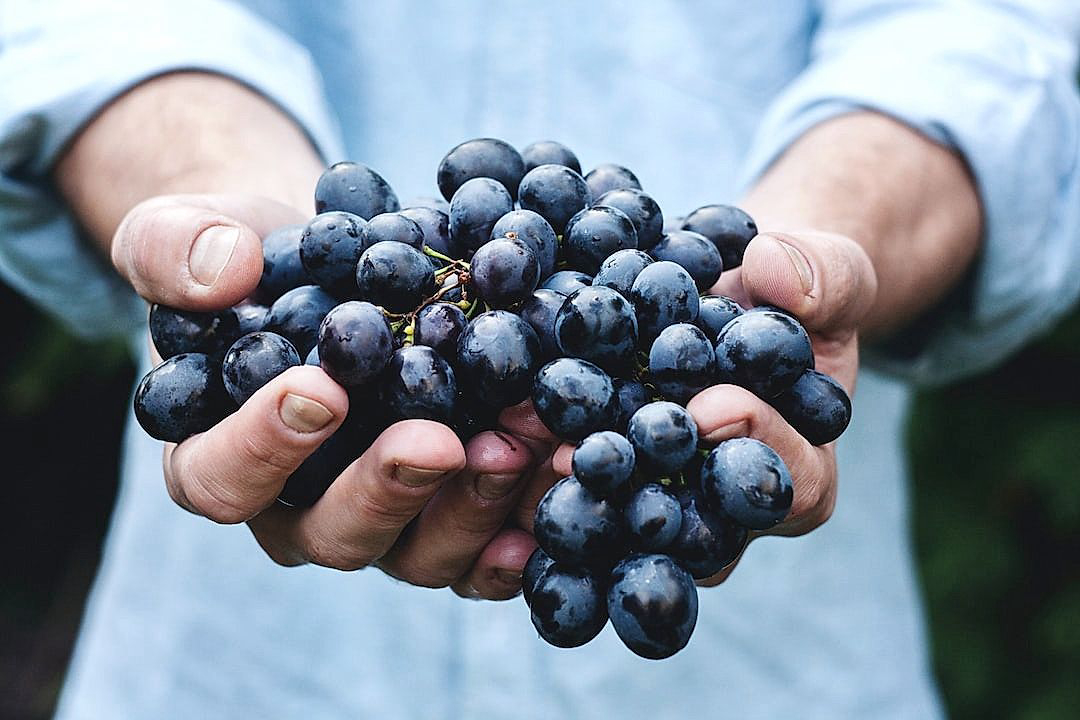In an era where speed, convenience, and freshness are considered paramount, innovation in produce distribution has become increasingly crucial.
One of the most pivotal aspects of this distribution chain is the last-mile delivery, a term that refers to the last stretch of the transportation process, landing the product directly into the consumer’s hands.
Recent years have witnessed exceptional growth and transformation in this domain, driven by numerous technological and consumer trends.
These evolutions are reshaping the way fruits, vegetables, and other agricultural produce reach our local grocery stores and doorsteps.
As industry players struggle to keep up with this evolution, understanding these trends is essential for competitive survival.
This write-up delves into the latest trends in last-mile delivery that are revolutionizing the produce distribution landscape across the globe.
Contents
- Last-mile Delivery Trends In Produce Distribution
- 1. Increased use of eco-friendly delivery vehicles
- 2. Demand for faster, same-day delivery
- 3. Implementation of Contactless Delivery Methods
- 4. Integration of Advanced Tracking Technologies
- 5. Utilizing drones for speedy delivery
- 6. Increasing use of local fulfillment centers
- 7. Growing trends towards subscription-based produce boxes
- The Bottom Line
Last-mile Delivery Trends In Produce Distribution
1. Increased use of eco-friendly delivery vehicles
The implementation of eco-friendly delivery vehicles in the distribution of produce is rapidly becoming a leading trend.
Efforts towards reducing our carbon footprint have led many companies to consider cleaner delivery alternatives.
Electric delivery vans and hybrid trucks are becoming more common in the logistics sector, as these vehicles emit fewer pollutants compared to traditional diesel-powered vehicles.
They not only represent a positive step towards environmental sustainability, but they are also a cost-effective alternative in the long run.
The intense focus on sustainability has surged the demand for eco-friendly delivery options in the produce industry.
By adopting green delivery methods, retailers not only benefit from the lower operating costs and the positive environmental impact but they also enhance their brand image by displaying their efforts towards sustainability.
Farm-fresh retailers and organic markets are among those leading the use of eco-friendly delivery vehicles.
These companies have seen a surge in demand from customers looking for a green alternative for their grocery deliveries.
Though transitioning to electric or hybrid vehicles requires an upfront investment, the long-term benefits lead many to consider it a worthwhile investment.
The operational costs of electric vehicles, such as maintenance and fueling costs, are lower compared to traditional delivery vehicles.
Furthermore, opting for eco-friendly deliveries has the potential to attract a new customer base, especially those concerned about the environmental impact of their shopping habits.
Delivering fresh produce using eco-friendly vehicles not only reduces pollution but also supports the local economy by reducing the dependency on fossil fuels.
Relying on renewable energy sources for delivery strengthens the argument for sustainable produce distribution.
The trend of using eco-friendly delivery vehicles does more than simply reduce a company’s carbon footprint.
It also signals a company’s commitment to combating climate change, presenting a responsible image to the consumer, and contributing to the larger goal of sustainable development.
2. Demand for faster, same-day delivery
The demand for faster, same-day delivery is one of the most prominent trends reshaping the produce distribution industry.
The rise of digital platforms and e-commerce has significantly changed consumer’s expectations, particularly when it comes to the speed of delivery.
Today’s customers are no longer willing to wait for several days to receive their groceries, they want their fresh produce delivered the same day they place their order.
The ‘Amazon effect’ has accustomed customers to receiving their products in record time, which is why the pressure for same-day delivery is now higher than ever.
In turn, this is challenging produce distributors to reconsider their logistics and upgrades in their last-mile delivery strategies.
Same-day delivery is not only about speed but also about the efficiency and reliability of the service.
It implies having a well-oiled supply chain, from the farm to the consumer’s door, that can handle the variable and unpredictable dynamics of fresh produce distribution.
This trend is particularly challenging for distributors dealing with fresh produce, as these items need special handling, refrigeration, and quick delivery to maintain produce freshness.
As such, the expectations for same-day delivery are pushing the industry toward more innovative solutions and business models to meet this growing demand efficiently.
One of them is the increasing use of local fulfillment centers which shorten the length of delivery routes and allow for more deliveries in less time.
Another is the implementation of advanced tracking technologies that enable real-time monitoring of the deliveries and provide the customer with accurate ETAs.
Companies are even utilizing drones and autonomous vehicles for speedy delivery, as these can navigate faster and avoid common traffic problems.
However, implementing same-day delivery is not without its cost.
It requires additional resources, workforce, and operational costs, which is why many companies are looking at premium pricing for this service, or using it as a differentiating factor to attract loyal customers.
Despite the challenges and costs, same-day delivery is becoming a necessity in the produce distribution industry, driven by consumer demand and the competitive landscape.
As we look into the future, the demand for faster, same-day delivery will continue to shape the strategies, technologies, and operations of food and produce distributors.
3. Implementation of Contactless Delivery Methods
The current environment is driving an increase in the implementation of contactless delivery methods in the realm of produce distribution.
This form of delivery involves minimizing physical interaction between the delivery personnel and the customers.
The necessity for these methods has accelerated with the global pandemic situation, where maintaining social distance is a primordial factor.
At a high level, contactless delivery involves leaving packages at a customer’s doorstep or other specified safe places to avoid physical contact.
However, implementing such methods in last-mile delivery – the process of transporting goods from a transportation hub to the final delivery destination, has its challenges and considerations.
These include maintaining the quality and freshness of the produce during transit, ensuring the safety of the products, and providing confirmation of delivery without a physical signature.
Technological advancements have played a major role in making contactless delivery feasible and efficient.
Mobile applications and websites now allow customers to choose a safe place for deliveries, provide delivery instructions, and even track their delivery in real time.
A key aspect of contactless delivery in produce distribution is maintaining the integrity and freshness of the products while they are waiting to be picked up by the customer.
Specialized packaging technologies, chill boxes, and advanced refrigeration methods have emerged as solutions to this problem.
For instance, some delivery services are using smart lockers which are temperature-controlled and secure, providing an ideal solution for contactless delivery of fresh produce.
Moreover, the safety of the products against theft or damage is another critical factor to consider.
Thus, some companies are investing in advanced technologies such as video surveillance and alarm systems to ensure product safety.
An important caveat to note, however, is the potential increase in costs associated with the implementation of these contactless delivery methods and technologies.
Nevertheless, given the growing demand and social responsibility, many businesses in the sector are willing to accommodate these costs as part of their last-mile delivery strategies.
In conclusion, contactless delivery methods are fast becoming a necessity and are redefining last-mile delivery trends in produce distribution, despite the associated challenges and costs.
4. Integration of Advanced Tracking Technologies
The produce distribution industry is rapidly evolving, with the adoption of sophisticated tracking technologies and systems that mark the future for last-mile delivery.
Advanced tracking systems improve the transparency and efficiency of the delivery process.
They allow businesses to monitor the location and status of their deliveries in real-time, ensuring they can address any unexpected delays or complications as soon as they arise.
Ultimately, these innovative technologies play a crucial role in enhancing customer satisfaction, as they offer consumers the ability to track their packages in real-time, providing them with accurate, up-to-the-minute information on the status and location of their orders.
The use of Internet of Things (IoT) devices, such as GPS sensors and RFID tags, has become increasingly vital in facilitating this kind of live tracking in last-mile delivery.
The integration of these devices into the delivery process enables businesses to gather vital data on each delivery’s journey, from the warehouse to the consumer’s doorstep.
Moreover, this data can be leveraged to identify potential areas of improvement in the delivery chain, helping to streamline operations and improve overall efficiency.
For instance, companies can use this data to optimize routes for their delivery vehicles, reducing delivery times and impacting positively on their carbon footprint.
Additionally, in an era where consumer experience is king, advanced tracking technologies offer a value-adding tool in elevating customer experiences.
Consumers are increasingly seeking greater visibility and control over their orders, and real-time tracking answers this demand.
Thus, businesses that implement these technologies not only improve their operational efficiency but also gain a competitive edge in the market by meeting consumer’s rising expectations.
The integration of machine learning and AI into advanced tracking systems is the next exciting phase for the produce distribution industry.
These technologies have the potential to anticipate possible disruptions or inefficiencies in the delivery chain, allowing for proactive problem-solving before problems even occur.
Astoundingly, some companies have already started experimenting with AI-driven predictive algorithms to forecast demand and optimize delivery routes, taking the efficiency of their last-mile delivery to a whole new level.
Therefore, the integration of advanced tracking technologies represents a revolutionary trend that is set to shape the future of last-mile delivery in produce distribution.
5. Utilizing drones for speedy delivery
Delivery drones are emerging as a major trend in the last-mile distribution of produce.
This innovative technology introduces a revolutionary way to cut down on the time it takes for fruits and vegetables to arrive at their final destination.
Unlike traditional delivery methods, drones are not hindered by traffic or road conditions, which allows them to deliver goods in record time.
In the rapidly evolving landscape of produce distribution, speedy delivery has become exceedingly important, and drones present a cutting-edge solution to this problem.
In recent years, significant advancements in drone technology have made it more feasible for companies to consider incorporating them into their delivery processes.
Modern drones are capable of carrying different loads and can cover extensive distances without the need for recharging or refuelling.
This capability makes them especially valuable for delivering produce, which is often perishable and needs to reach consumers as fresh as possible.
The use of drones could potentially enable companies to offer same-day or even within-the-hour delivery options, greatly improving customer satisfaction.
Moreover, drones are typically programmed to follow optimized routes, ensuring they fly the most efficient paths and further speeding up the delivery process.
Another important advantage of drones is their positive environmental impact.
As electrically powered devices, they emit no exhaust fumes and hence, contribute to cutting greenhouse gas emissions associated with traditional delivery vehicles.
The integration of drones in produce delivery could also lead to significant cost savings in the long run.
Despite initial setup and maintenance costs, drones can be more cost-effective than traditional delivery methods due to their speed, efficiency and lack of continuous fuel requirements.
However, despite their many advantages, the use of drones for delivery still faces regulatory issues and technical challenges, such as flight safety, payload capacity, and customer acceptance, that need to be addressed and overcome before they can be widely adopted.
One could say that the use of drones in last-mile delivery represents a seminal development in produce distribution, one that promises to reshape the industry and greatly enhance the efficiency and speed of deliveries.
6. Increasing use of local fulfillment centers
In the wake of last-mile delivery trends in the produce distribution arena, the increasing use of local fulfillment centers has seen significant growth.
A local fulfillment center offers an array of benefits such as decreasing duration spent on the last-mile delivery and improving efficiency.
These centers also offer benefits like decreased transportation costs and safer food handling procedures, which can be extremely vital in produce distribution.
Local fulfillment centers are often strategically located in closer proximity to consumers, significantly reducing the travel distance for deliveries and subsequently the delivery time.
This presents a viable solution to the increasing consumer demand for faster, same-day delivery.
Moreover, having many smaller fulfillment centers scattered across a wide area can also potentially reduce carbon emissions, aligning with the global push for eco-friendly practices in all types of industries, including produce distribution.
Notably, local fulfillment centers are beneficial in managing inventory more effectively since the produce is closer to the consumers and can be distributed according to their specific needs and preferences.
These centers also utilize advanced tracking and inventory management technologies, optimizing their operations and assuring all goods reach their destinations in time.
Due to the perishable nature of produce, spoilage is often a potent issue in its distribution, which can be significantly curtailed with closer proximity to the customers.
Local fulfillment centers facilitate a faster turnover of the fresh produce, thus reducing spoilage and waste and improving the overall quality of the items delivered.
Another notable trend that has driven the increase in local fulfillment centers is the growing demand for subscription-based produce boxes, where customers pay a recurring fee for a box of fresh produce delivered to their door at regular intervals.
These subscriptions often require a tight turn-around time and high level of flexibility that can be achieved with more localized distribution.
Incorporating local fulfillment centers also provides an opportunity to collaborate with local farmers and producers, boosting local economy while ensuring fresh, high-quality produce for consumers.
Therefore, as per the growing trends and benefits, local fulfillment centers can no longer be an overlooked element in the sphere of last-mile produce delivery.
This increased reliance on local fulfillment centers is a vital trend that is expected to further evolve and strengthen in the future, marking a significant shift in the paradigms of produce distribution.
7. Growing trends towards subscription-based produce boxes
The industry of produce distribution is witnessing a considerable trend towards subscription-based produce boxes.
It’s an approach allowing consumers to receive a regular, usually weekly or monthly, selection of locally sourced, organic fruits and vegetables.
This trend is driven by a growing consumer consciousness about the importance of consuming fresh and nutritive food, and a desire to support local farmers and sustainable farming practices.
Customers appreciate the convenience of home delivery and the opportunity to enjoy diverse produce they might not otherwise find in their local supermarket.
From a delivery viewpoint, subscription boxes present an effectual approach to organize last-mile distribution.
With a predictable and consistent delivery schedule and location, distributors can optimize their routes and improve efficiency.
This kind of commitment, seen from consumers, enables better planning and managing of inventory; leading to lesser food waste and more sustainable business practices.
This model can be particularly beneficial for smaller, local farmers who can bypass traditional supermarket chains and directly access customers.
In this way, they get a fair price for their produce, and form a more personalized and trusting relationship with the end-consumer.
However, implementing a subscription-based model is not without its challenges.
It requires a notable logistical infrastructure to ensure products are delivered fresh and on time, which can be demanding for smaller businesses.
In response, we are seeing the rise of companies specializing in logistical solutions for subscription-based deliveries.
These companies offer services such as route planning, tracking, and packaging solutions that are specially tailored for the unique needs of produce boxes.
They aim to make it easier for distributors and producers to make the transition towards a subscription-based model.
Moreover, for those managing the last-mile journey of these boxes, keeping customers updated on delivery status and handling any potential issues or changes in the schedule are important considerations.
In conclusion, subscription-based produce boxes represent a significant trend in the produce distribution industry, with many benefits for consumers, producers, and last-mile delivery logistics.
The Bottom Line
Efficiency and sustainability are the guiding principles shaping the future of delivery services.
A burgeoning eco-awareness is propelling businesses to adopt environmentally friendly delivery vehicles.
The need for speed is being satisfied through advanced tracking technologies and the use of drones, making same-day delivery a reality.
As the pandemic continues, the adaptation of contactless delivery methods remains a necessity, ensuring customer and staff safety.
Closer proximity to customers through the use of local fulfillment centers is also gaining traction, accelerating delivery times and reducing carbon footprint.
Additionally, the convenience and regularity of subscription-based produce boxes is becoming an increasingly attractive proposition.
Therefore, it’s clear that technology intertwined with awareness about the environment and consumer needs are driving progressive transformations in the delivery industry.




